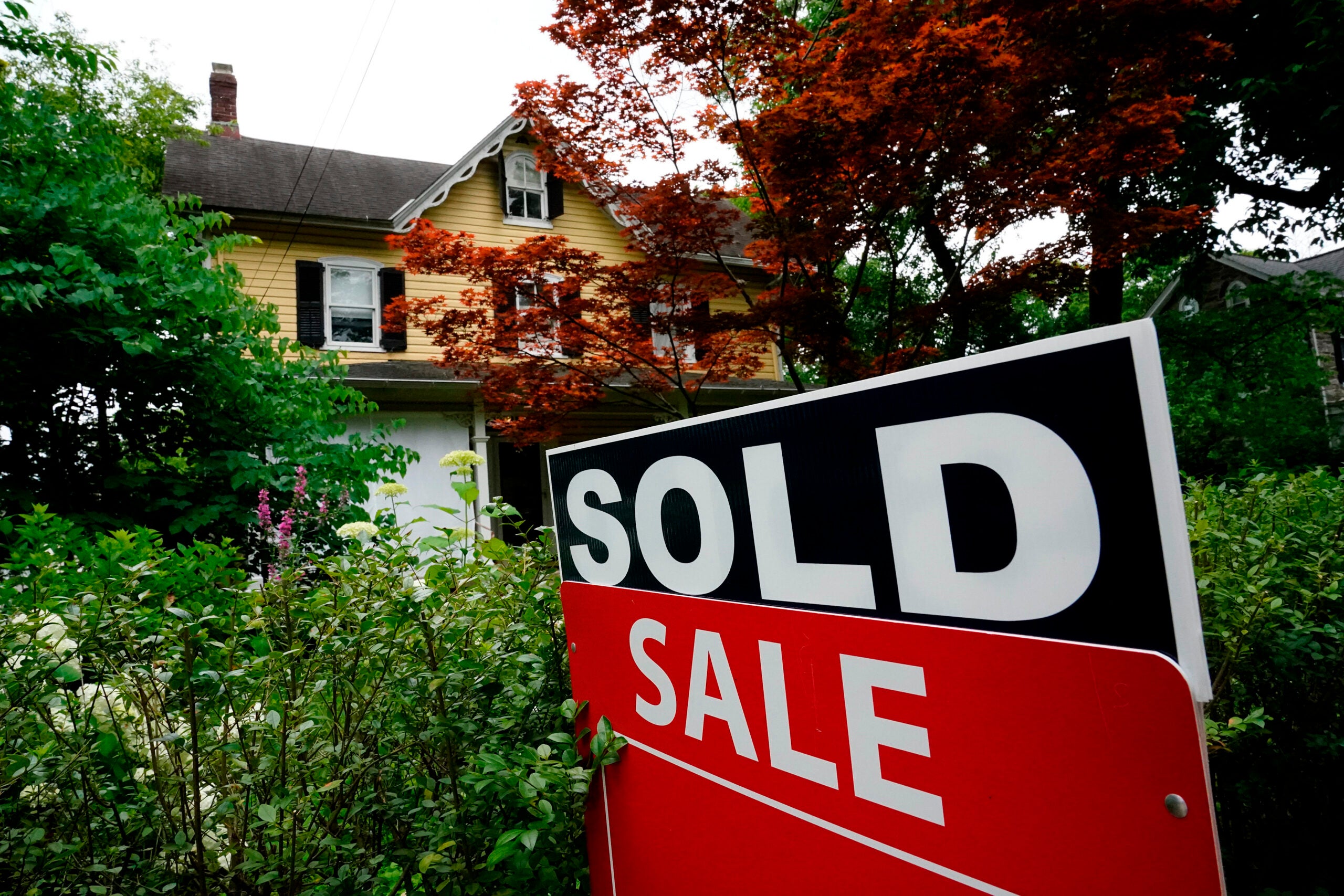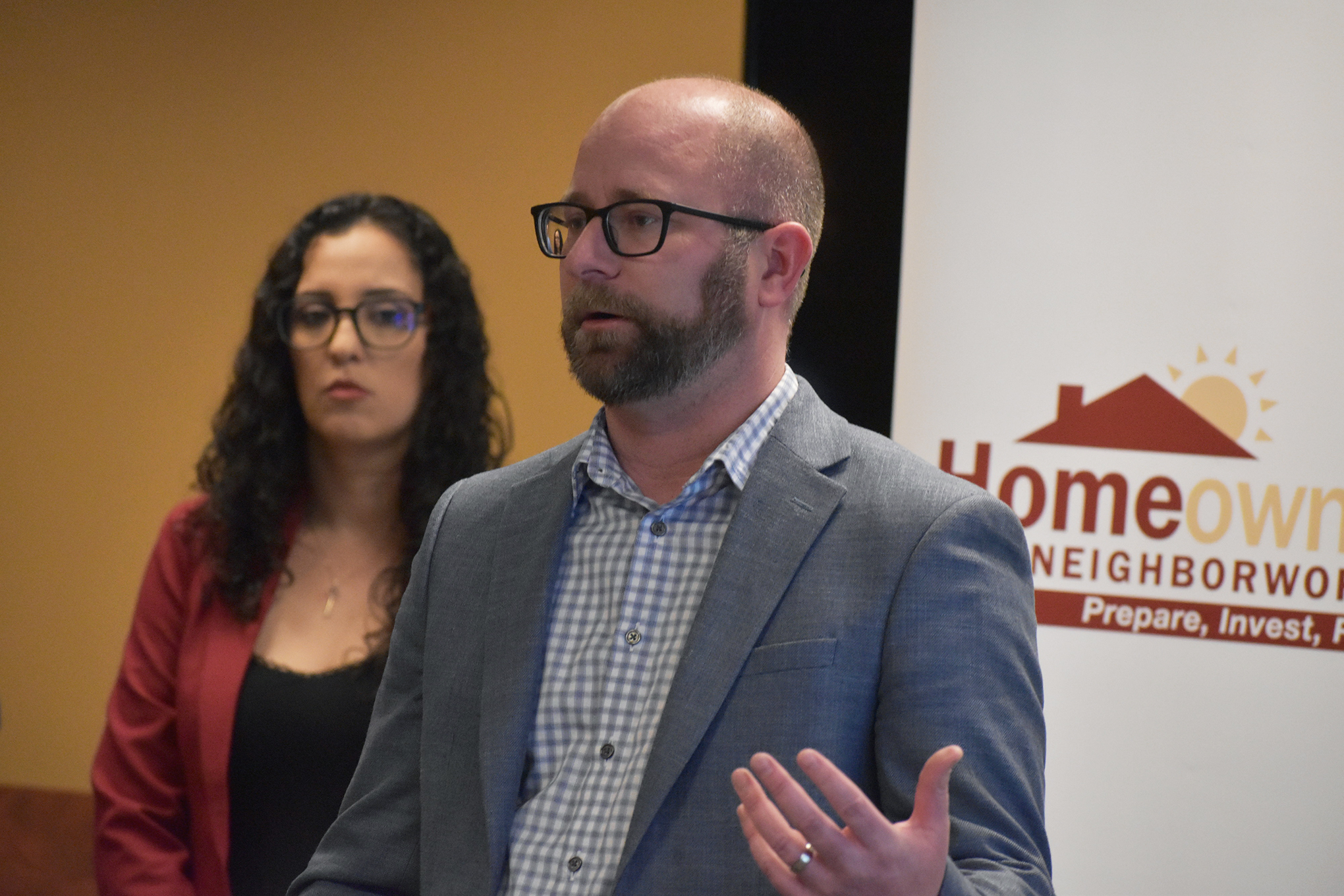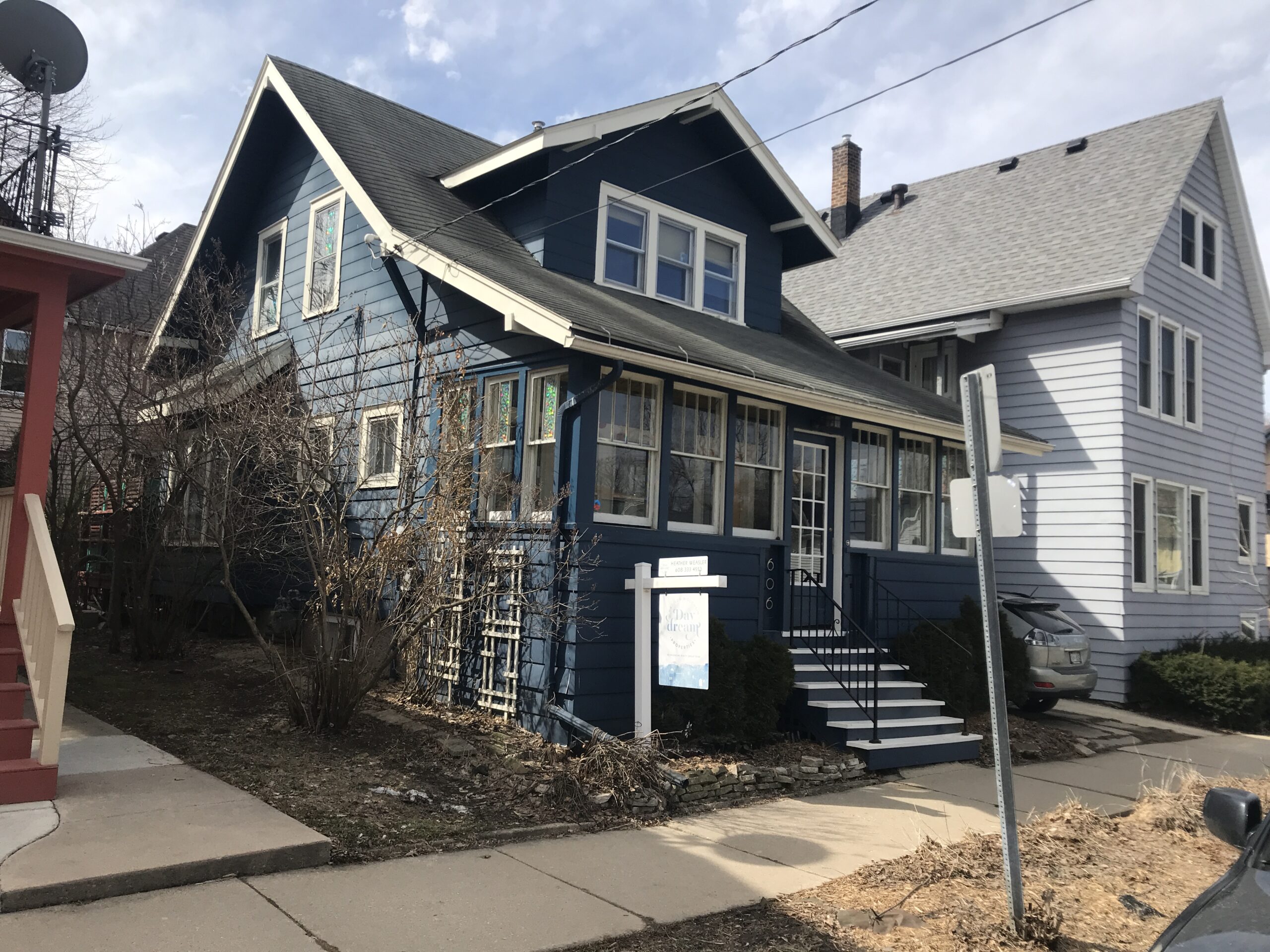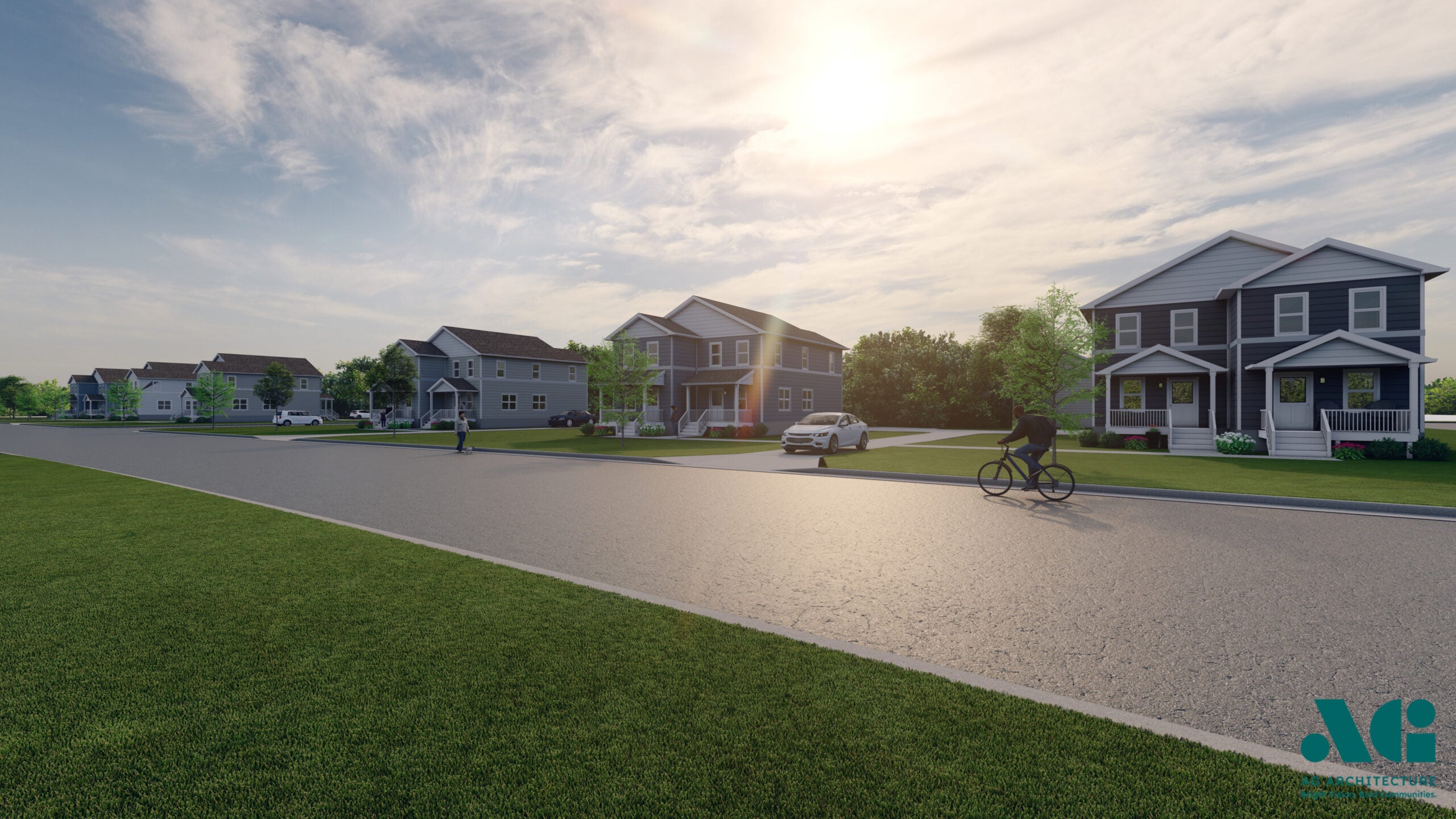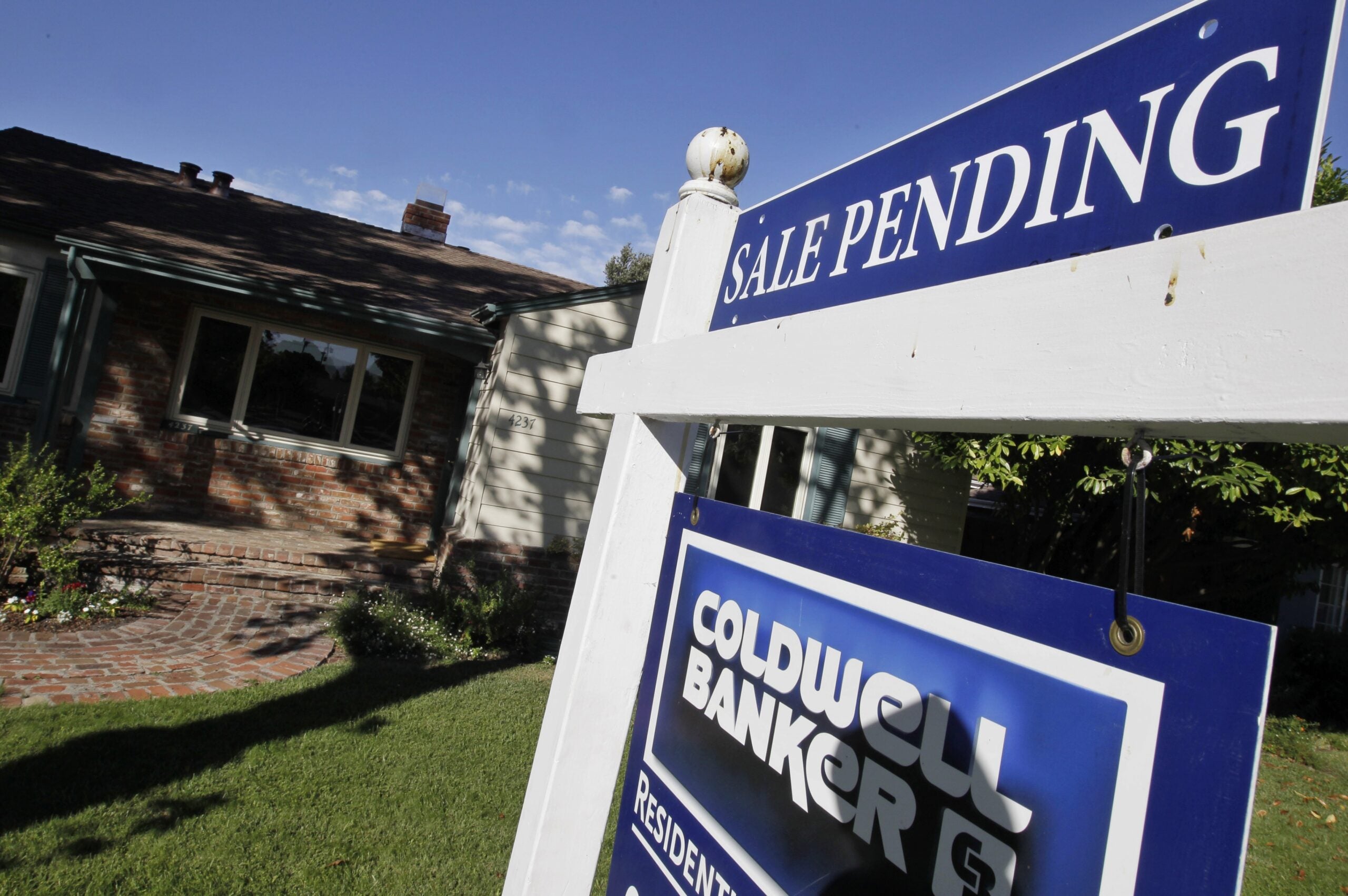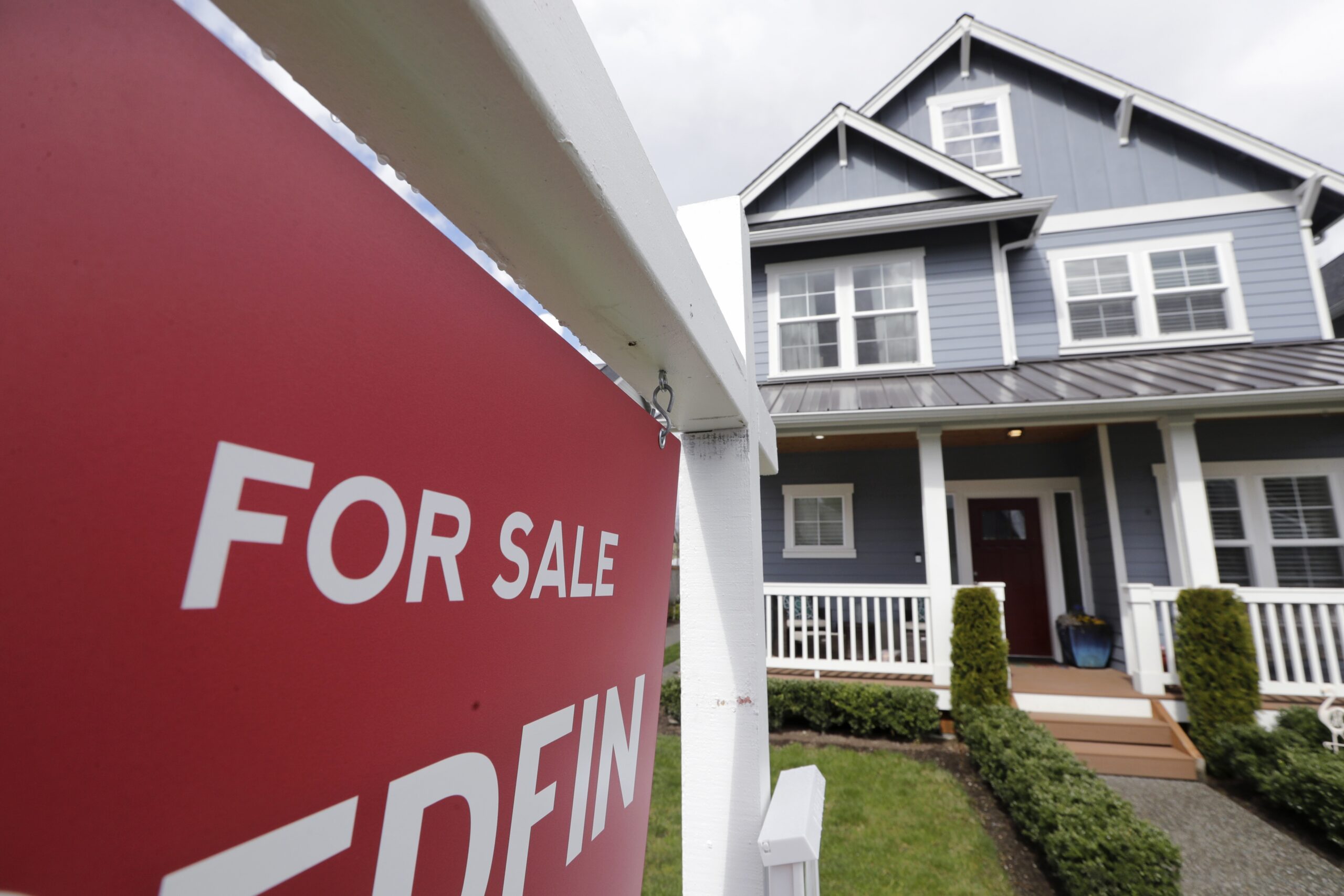Waukesha County residents Meagan Hitney and Nathan Jaeger have been struggling for months to purchase their first home.
The couple met about seven years ago while attending the University of Wisconsin-Milwaukee. After four-and-a-half years of living together and saving money, they finally felt ready to buy a house.
“We’ve been renting and we have a dog,” Hitney said. “One of the biggest driving factors to looking towards (buying) a house was just having our own space for her and for us, especially after years of renting in this market.”
News with a little more humanity
WPR’s “Wisconsin Today” newsletter keeps you connected to the state you love without feeling overwhelmed. No paywall. No agenda. No corporate filter.
They began looking for homes, ranging in price from $210,000 to $275,000, in southeast Wisconsin and the Dane County area. But Hitney said almost every house they’ve looked at had something in the condition report that they’d have to fix down the road.
At the same time, the couple said they’ve put in offers on three houses — all above asking price — and haven’t gotten an accepted offer because there’s so much competition.
“Almost every showing we’ve had, we were not the only ones looking at that house,” Hitney said. “One of the houses we looked at there were like 20 people in the house at one time.”
The couple plans to pause their house hunt because they anticipate even more competition this summer, traditionally peak home-buying season.
They aren’t the only Wisconsinites struggling to buy their first home right now. A new report from the Wisconsin Realtors Association found that home affordability last month was the worst it’s been since the organization began tracking that metric in 2009. That’s despite an 11 percent growth in sales compared to May 2023. A recent Wisconsin Policy Forum report also found that home prices in the state have risen faster than incomes in recent years.
At the same time, the state continues to face a housing shortage. As of 2022, the state needed to add between 140,000 and 227,000 housing units by 2030 to keep up with demand and accommodate growing its working-age population, according to a report from the Wisconsin Counties Association.
In a statement, Wisconsin Realtors Association President and CEO Tom Larson said the state’s housing market is a tough environment for buyers, due to high mortgage rates and limited supply.
“Unfortunately, affordability hit its all-time low point in May,” he said. “The good news is that supply has been improving since late last year, which has moderated the rate of price appreciation. Hopefully mortgage rates also will moderate and help improve our affordability during the summer sales period.”
What’s hurting affordability?
David Clark, professor emeritus of economics at Marquette University and a consultant with the Wisconsin Realtors Association, said the affordability index is calculated using median home prices, median family incomes and 30-year fixed rate mortgages.
Of those measures, Clark said high prices and mortgage rates typically hurt affordability, while median family income growth can help affordability.
Last month, the median home price rose to $315,500, a 6.9 percent increase over the last 12 months, according to Realtors Association data.
Clark said price increases in May were relatively moderate when compared to some of the increases the association has seen in the last couple years where prices went up by double-digit margins. He also said median family income growth has been relatively modest over the last year.
“The real challenge has to do with mortgage rates,” he said, noting those rates increased from 6.43 percent last May to 7.06 percent this May. “Until we really start seeing some improvement on those mortgage rates, we’re likely to have relatively low housing affordability.”
Inventories improved slightly last month, with new listings up 4.7 percent compared to May 2023, and total listings up 5.4 percent over that same period. But Clark said it’s still a seller’s market.
Jaeger, one of the prospective homebuyers in Waukesha County, said mortgage rates and limited supply hindered his home search.
“Interest rates coming down (would be) a huge thing for us,” he said. “The availability is a big issue for us because, I mean, the prices just keep going up.”
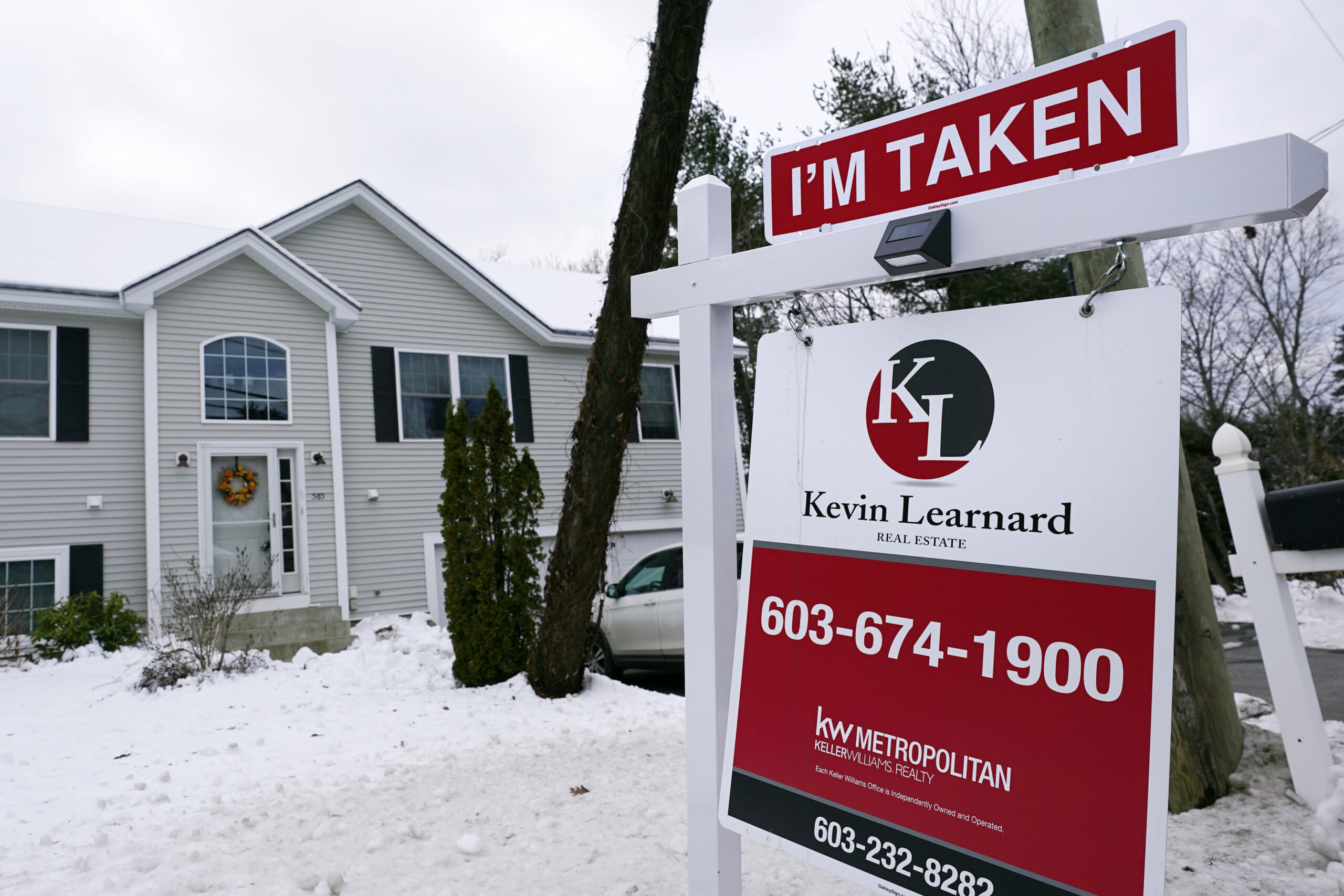
Advocate says more types of housing are needed
As affordability continues to pose challenges for homebuyers, William Ochowicz, a housing advocate who helped form the Madison is for People advocacy group, said increasing the types of housing and allowing for denser developments could help address the state’s housing shortage.
He pointed to things like duplexes or accessory dwelling units — small dwellings on the same property as a single-family home — as examples of varied types of housing that could make a difference.
Often, he said residents are limited between living in either a single-family home or an apartment complex.
That lack of choice, Ochowicz said, can prevent older adults from downsizing when they become empty nesters, limiting the homes going onto the market.
“They don’t want to leave their neighborhood, they don’t want to move away from their friends,” he said. “They still want some independence but they don’t have something to downsize into because the only things around are usually single-family homes.”
Developers working to add housing stock, face challenges
New home construction in Wisconsin picked up slightly last year after two years of declines, and developers report they’ve been busy so far this summer with remodeling projects and new construction.
But Brad Boycks, executive director of the Wisconsin Builders Association, said there are hurdles to increasing Wisconsin’s housing stock. He said inflation, high interest rates and community pushback are among the biggest obstacles.
When prices for one material, like lumber, go down, he said it often feels like prices somewhere else spike, pointing to rising copper prices as an example. At the same time, Boycks said high interest rates make it harder for developers to finance housing developments. He said the association hopes to see an interest rate cut by the end of the year.
He also said residents expressing a “not in my backyard” mentality when housing developments get proposed can derail projects entirely, making it harder to address the shortage.
“We need to embrace changes and more types of housing that might go in your community, or might go just across the street because we’re going to need all those types of housing to get everybody in homes,” he said.
The League of Wisconsin Municipalities, Wisconsin Realtors Association and the Wisconsin Builders Association have launched a new effort to inform local governments about zoning changes and other strategies communities can use to help address the housing shortage.
Boycks said his membership is already using some of the materials developed for the information campaign.
“If we have a builder or developer that is going to go to a community, they have the tools to share with their local elected leaders to make some changes to hopefully make more housing options available,” he said. “We’re hopeful that this effort will continue the conversation and hopefully make it a lot easier for municipalities.”
Wisconsin Public Radio, © Copyright 2025, Board of Regents of the University of Wisconsin System and Wisconsin Educational Communications Board.

